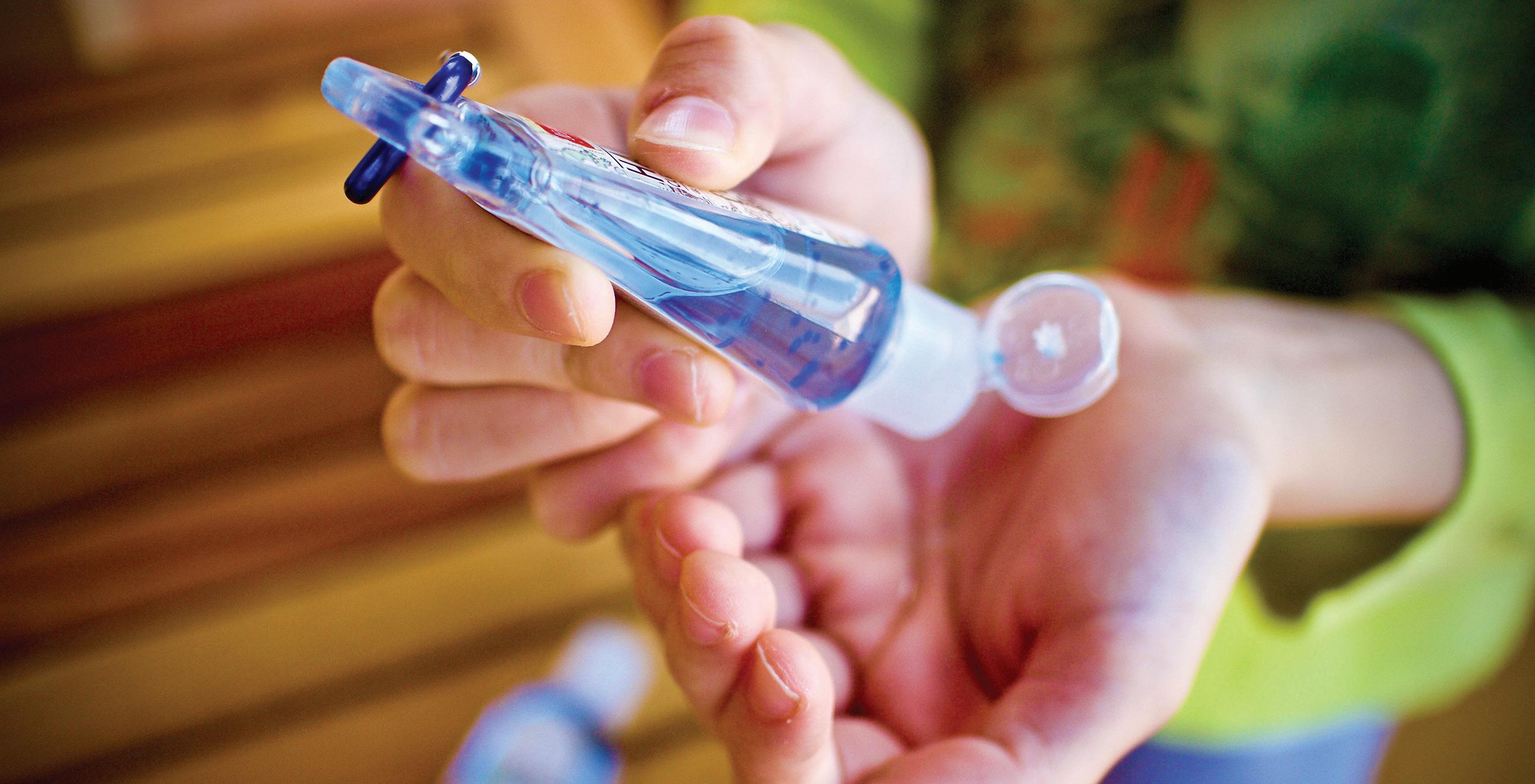
6 minute read
Eisenmann Corporation
Expo in September focused on control charts as a way to make sure lab equipment is functioning properly. But, he adds, control charts can be useful in other areas, too. “Ethanol laboratories are not the only place where data is collected and analyzed to determine how the process is running,” he says. “That’s also something that’s done in the control room. … It complements doing trends in a DCS, because it’s a way to check your instruments. You can actually use it for the whole process. You could make control charts for the temperature on ferm 2 if you really wanted to.”
Hank Britton, director of optimization and advanced control for OpX Control Inc., agrees that control charts are valuable outside the lab. Briton, whose work with ethanol plants involves programming PID control loops and continuous process control, says control charts can be used in process control for things like measuring fermenter temperatures. “You could plot temperature at a specific time for multiple batches,” he says. He adds that one of his customers did this as a way to see how fermenters were operating. They plotted fermenter temperatures at 12, 18 and 24 hours for different batches. “[They] looked at snapshots for multiple fermentation batches before I did work and then multiple fermentation batches after I did my work,” he says. “You could plot temperature at specific times for those batches to see an improvement.”
He also says plotting dryer temperature could be helpful. He said a customer recently complained his dryer was not controlling well. “when I looked at the average absolute error, the absolute value of the deviation from the setpoint as a function of time, it went up from like a 0.22 to a 0.69,” Britton says. “That increase in an average absolute error indicated to me that something changed in the process.”
However, control charts remain most impactful in the lab. And Plack recommends plants use them. “I would highly recommend the use of control charts in the laboratory for all aspects; all tests that they run,” she says. “The big thing is you don’t know what you don’t know. So you really need to watch all of these things because a little bit of a change in an instrument could affect all kinds of operational changes, and then you find out it was because an instrument was not tight enough and that could mean a lot of money to the plant.”
Author: Matt Thompson Freelance Writer mthompson@bbiinternational.com

Decades ofReliable Exhaust Treatment in the Ethanol Industry








Eisenmann VRTO-C
Proven and trusted >100 installations Engineered for your application 100% system reliability 24/7/365 technical response service

+1 (815) 477 - 533533+1(815)477-53 ethanol@eisenmann.comethanol@eisenmann. www.eisenmann.com/ethanoeisenmann com/e l





SANITIZING STANDARDS: Ethanol producers have been following guidelines for hand sanitizer production, but those standards seem to conflict with previous studies and guidelines. PHOTO: STOCK

Tenuous Toxicity Concerns FDA guidelines for acetaldehyde content in sanitizers may be questionable given the compound’s relative ubiquity. By Jim Buchacker and Jim Forshaw
Corn is undeniably a bounty from nature. It has not only fed us well, but can also help protect us from one of nature’s deadliest agents: viruses. Ethanol made from corn has become an important weapon against COVID-19 when used as a hand sanitizer. While demand for sanitizer-grade ethanol has soared, fuel-grade ethanol plants witnessed a steep reduction in demand that has now rebounded but is still well below last year’s levels. For much of the industry, the spring downturn resulted in dramatic output reductions, plant idlings and even complete shutdowns. And while relatively few ethanol plants laid off employees, should the situation have persisted longer, the potential for massive job loss was real.
The Food and Drug Administration is charged with drafting health and safety standards, which govern the use of ethanol in sanitizers. These standards specify allowable limits of certain impurities in ethanol such as methanol, acetone, acetaldehyde, total acetal compounds, etc.
In March of 2020, the FDA published guidance titled “Temporary Policy for Preparation of Certain Alcohol-Based Hand Sanitizer Products During the Public Health Emergency (COVID-19) Guidance for Industry.” Unlike some foreign ethanol producers, U.S. producers typically do not experience problems with methanol exceeding specified limits. Rather, the most frequent impurity that plagues U.S. producers is acetaldehyde. But the FDA’s limits on acetaldehyde in ethanol for hand sanitizer present a confusing contradiction with other studies, and even other substances ingested and applied to skin.
CURIOUS LIMITS: The allowable content of acetaldehyde ingested in alcohol is actually higher than that allowed in ethanol for hand sanitizer. PHOTO: STOCK

Perplexing Footnote
Unfortunately, the FDA states in Attachment 1 of its guidance that it has “received data indicating that certain fuel ethanol products contain excessive levels of acetaldehyde, which appears to be a genotoxic carcinogen when in direct contact with tissues.” A corresponding footnote reads: “The toxicology for acetaldehyde differs when ingested as part of an alcoholic beverage (versus applied to skin as with hand sanitizer), in part due to the liver’s metabolism of acetaldehyde.”
The main problem with this statement is that FDA purports to be in possession of said data, but fails to cite that data in its footnote. Searches of U.S. EPA, International Agency for Research on Cancer, Health Canada, National Toxicology Program, National Institute for Occupational Health, and the European Commission on Public Health’s sites produced no data or references to the “special” carcinogenicity/mutagenicity risk that acetaldehyde poses to human skin. We are not saying that the data does not exist; however, we were not able to establish its existence.
And while this guidance document is classified as non-binding, it would certainly be nice to see the data that FDA is basing its suspicions on. It should also be noted that this non-binding guidance document could be taken to heart by American juries, who frequently have been found to take a dim view of defendants who do not follow “guidelines,” no matter how unproven they may be.
Acetaldehyde Content of Common Foods
500
s per Million rt Pa
100 50
10 5
1 Ap pl e Drink ( 7 . 5 ) A p pl e s ( . 8 8 ) B a n a na (f r e sh ) ( 1 0 ) Banana ( ve ry ri p e ) 1 8 C i n g ar e t t e s mo k e ( 47 0 ) F o un d C of f e e ( 2 0 ) M a lt V i ne g ar ( 1 0 60 ) O r a nge Ju i ce (3 . 8 6 ) O r a n ge S o f t D r in k ( 15 ) W hi s k ey ( 1 0 2 ) W in e ( 1 2 5 ) Y o g u rt (1 7 )
Dermal Toxicity
To muddy the waters even further, a 1995 study entitled “Could Bacterial Acetaldehyde Production Explain the Deleterious Effect of Alcohol on Skin Diseases” found that certain bacteria commonly found on human skin were capable of producing high levels of acetaldehyde when exposed to ambient levels of ethanol. Although this study was done in-vitro, the data can be extrapolated










